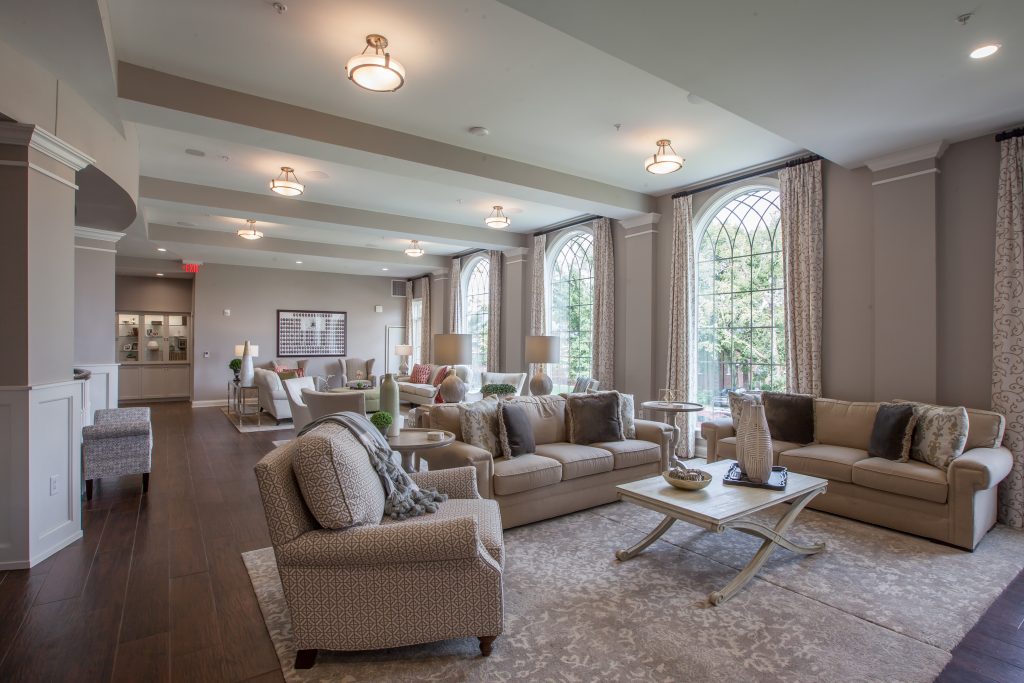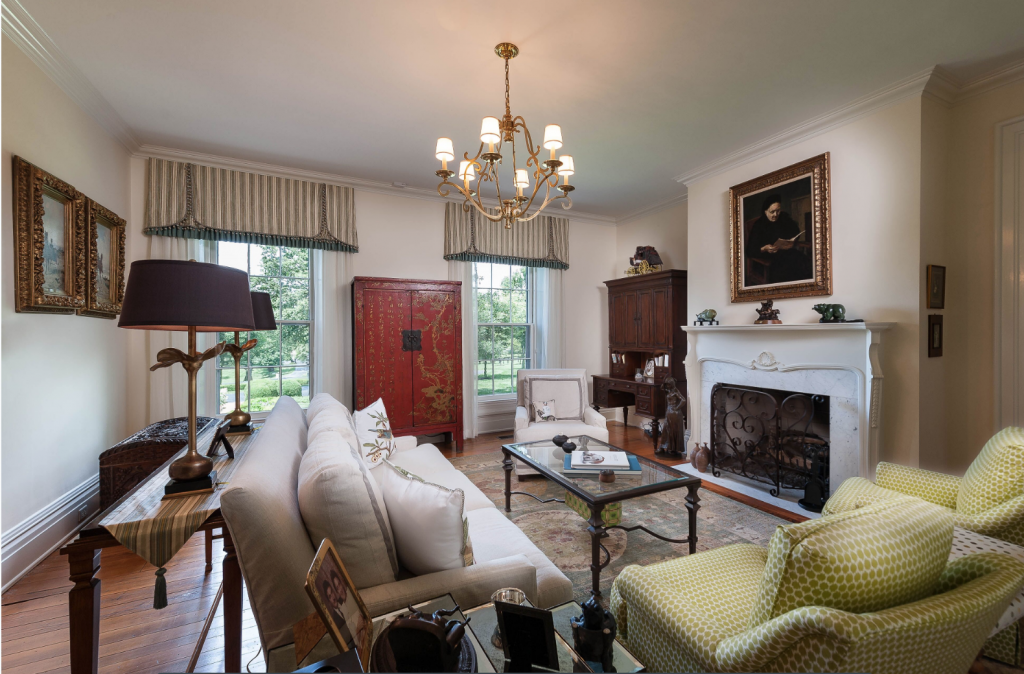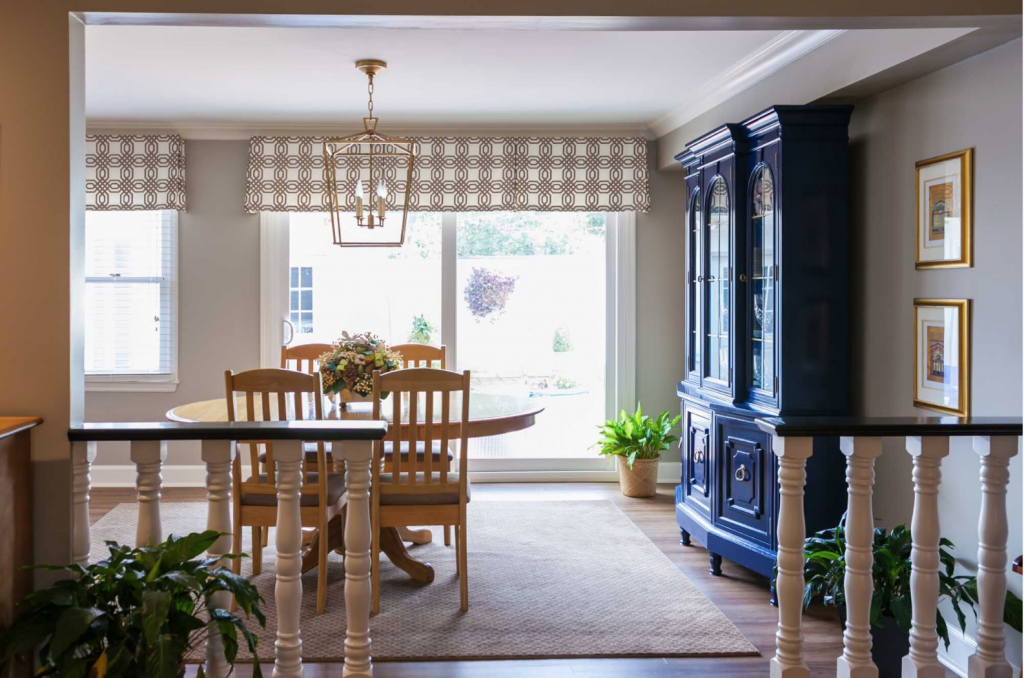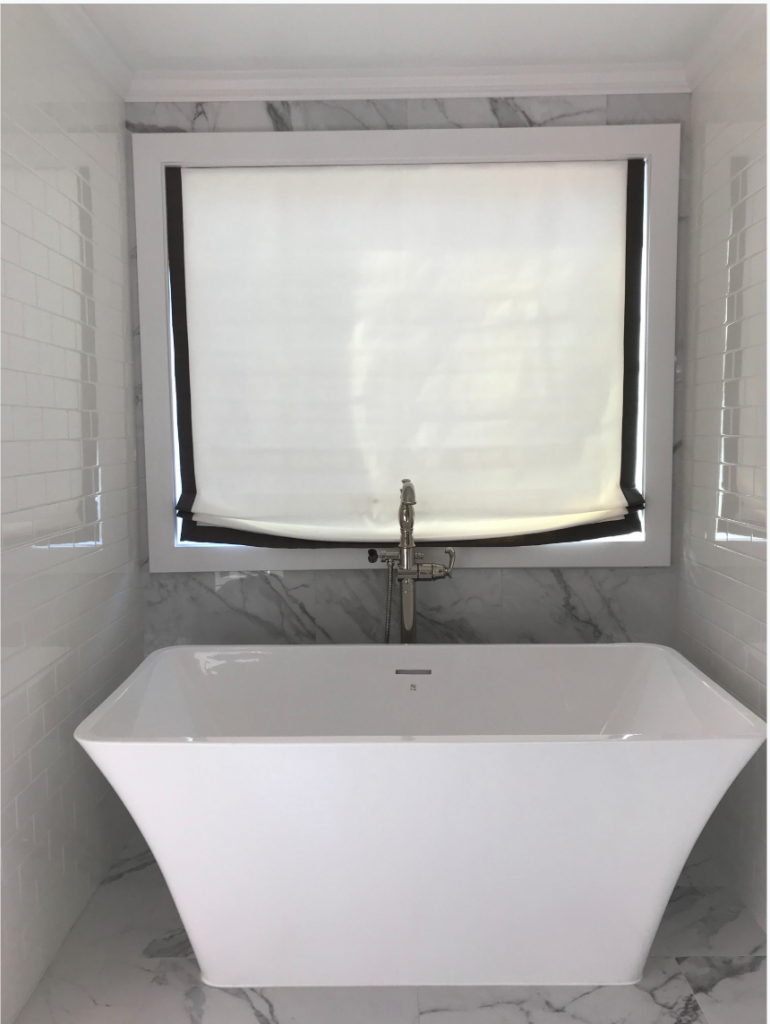19 Mar Window Treatments Part II
In the last post, I shared some thoughts on blinds and shutters as window coverings. But what if those aren’t your cup of tea? Have no fear- there are plenty of other options.
Shades are a great alternative to wood or faux wood blinds. Shades offer a softer look for a space and they operate differently than blinds. Some of my personal favorites for shades are silhouettes by Hunter Douglas OR roller shades. Silhouettes are beautiful with their soft, flowing folds. They offer great control options for operating the shade- everything from cords to remote controls. Roller shades have a slightly more contemporary look as they are flat when hanging, BUT they are available in a variety of fabric and color options. We love using them in office spaces or other commercial environment that get a lot of use. They also work well for families with small children due to the ease of cleaning.
Moving on to fabric treatments-
Draperies can be done in a couple ways- full functioning drapes (that open and close), are not only aesthetically pleasing, but also offer privacy and light control. If there are blinds or shades beneath them, you can make the drapes stationary panels that don’t function, in which case they are strictly for beautifying the room. If the budget is running a little tight, and you have existing blinds or shades, adding stationary panel overtop are an economical solution. Stationary panels require less fabric and lining, and as a result mean less labor required to sew the treatments.
When hanging drapes in a room, I always recommend that the panels run floor to ceiling (or in some instances, crown molding).

There are several reasons behind this:
1. to keep the treatment from obstructing the view out of the window.
2. to allow as much natural light in as possible during the day.
3. To heighten the look of the room visually. Note the graphic below, see what a difference it makes when the drapes are hung higher and wider than the window frame. When the drapes are hung on the window frame it makes the space feel squatty and blocks natural light from entering. This little trick makes a world of difference in a room! This rule of thumb applies to all draperies whether stationary OR fully functioning.
Window toppers (valances) are other great fabric treatments. They layer well on windows with blinds or shades. Toppers are good solutions for rooms that are not formal and/or in spaces that get dirty or where a lot of spills occur.

PDR Interiors
General Rules to keep in mind:
When choosing the treatment style and its material, consider the formality of the room, as well as the patterns and colors existing in the space. If you are hung up on choosing a fabric or treatment style, complete the rest of the room and come back to the windows later. It might make your decision easier to see the other components in the space.
When measuring for window treatments, you will need to know the following dimensions-
-For items mounted outside of window frame:
-Overall window height (top of frame edge to bottom of frame edge)
-Overall window width (outside of left frame edge to outside of right frame edge)
-Height of wall between top of window frame and ceiling (or crown molding)
-Height of wall between floor and bottom of window frame

PDR Interiors
-For items that will be mounted inside the window frame:
-Height of window
-Width of window
-depth of window frame

PDR Interiors
I hope you enjoy this part of the room decorating process!
-Liz


Sorry, the comment form is closed at this time.